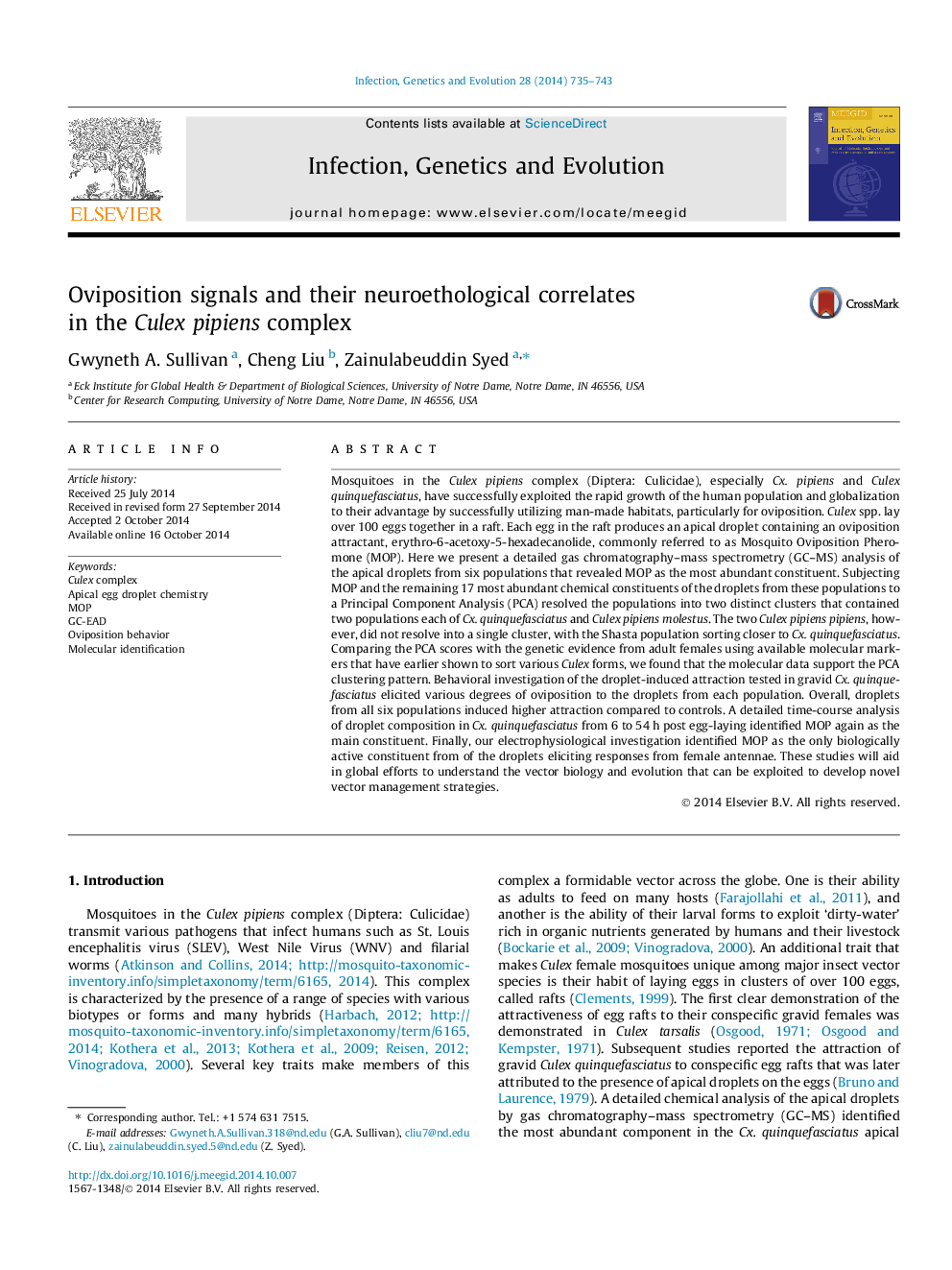| کد مقاله | کد نشریه | سال انتشار | مقاله انگلیسی | نسخه تمام متن |
|---|---|---|---|---|
| 5909593 | 1570175 | 2014 | 9 صفحه PDF | دانلود رایگان |

- Six populations of Culex pipiens complex were studied for the oviposition behavior.
- Chemical analysis of the apical droplets by GC-MS revealed MOP as the major constituent.
- Principal Component Analysis of the egg droplets resolved populations into distinct groups.
- Molecular evidence corroborates PCA clustering derived from the GC-MS data analysis.
- MOP induced behavioral and electrophysiological responses are reported.
Mosquitoes in the Culex pipiens complex (Diptera: Culicidae), especially Cx. pipiens and Culex quinquefasciatus, have successfully exploited the rapid growth of the human population and globalization to their advantage by successfully utilizing man-made habitats, particularly for oviposition. Culex spp. lay over 100 eggs together in a raft. Each egg in the raft produces an apical droplet containing an oviposition attractant, erythro-6-acetoxy-5-hexadecanolide, commonly referred to as Mosquito Oviposition Pheromone (MOP). Here we present a detailed gas chromatography-mass spectrometry (GC-MS) analysis of the apical droplets from six populations that revealed MOP as the most abundant constituent. Subjecting MOP and the remaining 17 most abundant chemical constituents of the droplets from these populations to a Principal Component Analysis (PCA) resolved the populations into two distinct clusters that contained two populations each of Cx. quinquefasciatus and Culex pipiens molestus. The two Culex pipiens pipiens, however, did not resolve into a single cluster, with the Shasta population sorting closer to Cx. quinquefasciatus. Comparing the PCA scores with the genetic evidence from adult females using available molecular markers that have earlier shown to sort various Culex forms, we found that the molecular data support the PCA clustering pattern. Behavioral investigation of the droplet-induced attraction tested in gravid Cx. quinquefasciatus elicited various degrees of oviposition to the droplets from each population. Overall, droplets from all six populations induced higher attraction compared to controls. A detailed time-course analysis of droplet composition in Cx. quinquefasciatus from 6 to 54Â h post egg-laying identified MOP again as the main constituent. Finally, our electrophysiological investigation identified MOP as the only biologically active constituent from of the droplets eliciting responses from female antennae. These studies will aid in global efforts to understand the vector biology and evolution that can be exploited to develop novel vector management strategies.
Journal: Infection, Genetics and Evolution - Volume 28, December 2014, Pages 735-743